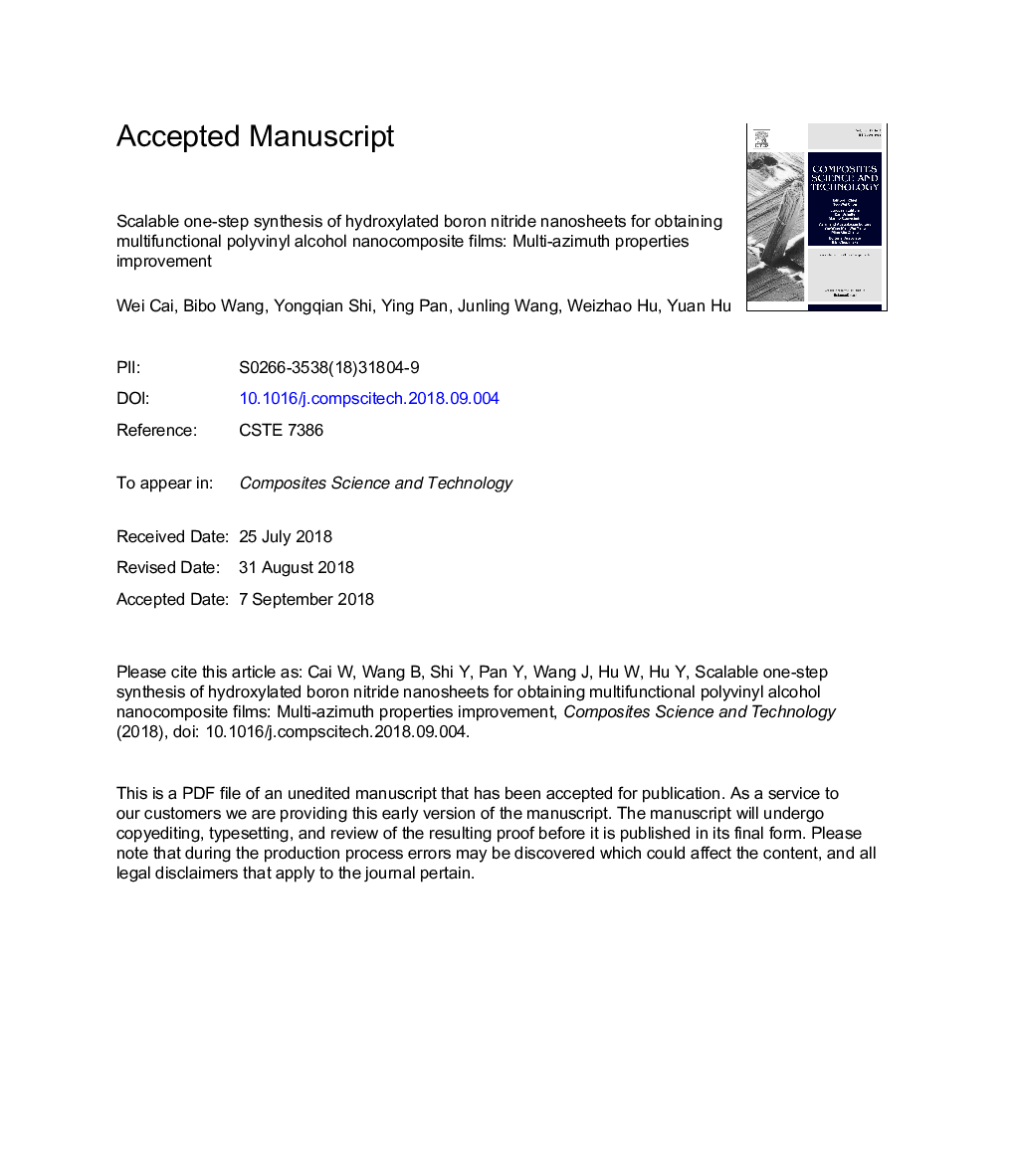| Article ID | Journal | Published Year | Pages | File Type |
|---|---|---|---|---|
| 10152772 | Composites Science and Technology | 2018 | 32 Pages |
Abstract
Introducing hydroxyl (OH) groups onto the surface of chemically inert hexagonal boron nitride (h-BN) is conducive to the exfoliation and functionalization of h-BN, meanwhile could enhance the intermolecular forces with polymer as well. However, chemical inertness generated by partially ionized BN bonds makes the introduction of OH groups still remains a challenge. Here, we reported a scalable one-step thermal calcination method for the fabrication of OH-functionalized h-BN nanosheets (OH-BN). Then, transparent, strong, and flexible as well as flame retardant nanocomposite films of as-prepared OH-BN and PVA were prepared through an aqueous solution casting technique. Due to hydrogen-bond self-assembly and crystalline-region self-relief, elongation at break, tensile strength, and Young's modulus of PVA nanocomposite film were simultaneously increased by 109.3%, 73.6%, and 144.4% with as low as 0.2â¯wt % OH-BN. Besides, the self-stiffness phenomenon that damages the material elasticity during dynamic service process of PVA nanocomposite films was effectively hindered. Meanwhile, the superior visible light transmittance and higher absorption quality to UV-light were also confirmed, which promoted its practical use in artificial cornea materials. Attributing to the well-dispersed state and layered structure, incorporated OH-BN presented a barrier function to suppress the delivery of thermal degradation products of PVA matrix, thus enhancing thermal stability and fire safety. Herein, we come to a conclusion that the scalable one-step synthesis of OH-BN and environmentally friendly fabrication of PVA/OH-BN nanocomposite films as well as excellent properties greatly contribute to the development of the practical application of h-BN nanosheets, thus obtaining multifunctional composite materials.
Related Topics
Physical Sciences and Engineering
Engineering
Engineering (General)
Authors
Wei Cai, Dichang Zhang, Bibo Wang, Yongqian Shi, Ying Pan, Junling Wang, Weizhao Hu, Yuan Hu,
